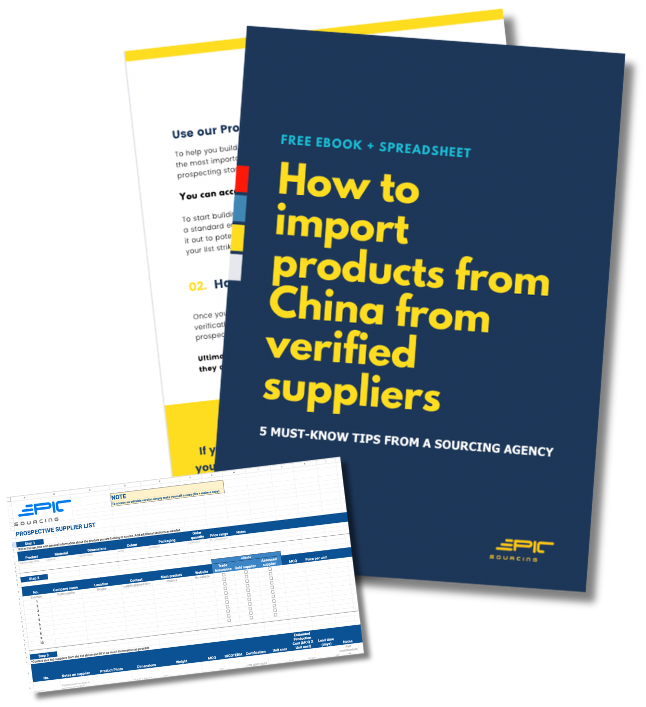Successfully importing products from Asia into New Zealand involves overcoming numerous obstacles - one of which is navigating the complex landscape of tariffs and customs regulations applicable to your imports.

Successfully importing products from Asia into New Zealand involves overcoming numerous obstacles - one of which is navigating the complex landscape of tariffs and customs regulations applicable to your imports. These regulations can significantly impact the cost, timeline, and overall success of your import business. As a sourcing agency committed to helping small and medium-sized businesses prosper, we understand the importance of mastering these aspects to ensure a smooth import experience and mitigate any potential financial risks.
In this blog post, we will delve deep into the intricacies of tariffs and customs regulations that directly impact imports entering New Zealand. We will discuss the essential steps to prepare for importing products from various countries in Asia, including understanding tariff classifications, staying updated with current trade agreements and regulations, calculating import duties and taxes, and adhering to proper customs documentation. Equipped with this knowledge, you'll be better positioned to prepare for potential challenges and optimise your import processes, resulting in cost savings, timely deliveries, and overall success for your NZ-based import business.
The foundation of managing tariffs and customs regulations begins with understanding tariff classifications. Here, we will cover the essentials of this crucial aspect:
For international trade, products are assigned specific HS Codes – a standardised system for classifying goods in global trade. HS Codes typically consist of six digits, broken down into chapters, headings, and subheadings. These codes determine the applicable tariffs and regulations for importing products into New Zealand.
New Zealand Customs maintains a working tariff document that categorises products based on their assigned HS Codes. Familiarise yourself with this document to determine the applicable duties and taxes for your imports.
Keep in mind that HS Codes and associated tariff rates are subject to change as the customs authorities continually revise and update classifications. Stay on top of these changes to avoid potential issues while importing your goods.
Trade agreements and regulations play a significant role in tariffs and customs processes. Here's what you need to know:
New Zealand has FTAs with various countries and regions, including China, Malaysia, and the ASEAN-Australia-New Zealand FTA. These agreements can provide preferential tariff rates for imports originating from these countries or regions.
To benefit from reduced tariffs under FTAs, your imported goods must meet specific rules of origin criteria. These rules define the minimum requirements for a product to be considered "originating" from a participating FTA country. Ensure you understand and comply with the relevant rules of origin for your imports.
Importing certain products, such as food, textiles, and electronics, may require additional compliance with industry-specific regulations and standards. Familiarise yourself with any such requirements that could impact your imports and plan accordingly.
Accurately calculating the applicable import duties and taxes is crucial for maintaining cost predictability and profitability. Consider the following steps:
Identify the appropriate HS Code for your imported goods and consult the Customs Working Tariff to determine the applicable tariff rate.
The customs value of your imported goods is typically based on the CIF (cost, insurance, and freight) or FOB (free on board) value. Ensure you're accurately calculating this value to determine the correct import duty.
Be aware of any additional taxes, fees, and charges that may apply to your imported goods. For example, New Zealand imposes a Goods and Services Tax (GST) on imports, which is calculated based on the combined customs value, import duty, and transportation costs.

Proper customs documentation and compliance are vital components of a smooth import process. Here's how to manage them effectively:
Ensure that all required customs documentation, such as commercial invoices, packing lists, and bills of lading, are accurate, complete, and consistent to prevent any delays or issues during the customs clearance process.
Consider engaging the services of a licensed customs broker. They are experts in navigating customs processes, calculating duties and taxes, and ensuring accurate and timely submission of documentation.
Maintain well-organised records of your import transactions, including supporting documents, as customs authorities may require such information in case of audits or disputes.
When it comes to managing a successful import business in New Zealand, understanding and effectively managing tariffs and customs regulations can make a significant difference in ensuring a smooth and cost-efficient import experience. By familiarising yourself with the different aspects covered in this blog – from tariff classifications and trade agreements to duties, taxes, and documentation – you'll be well-equipped to navigate the complexities of international trade and avoid potential pitfalls in your import journey.
Conquer the challenges of tariffs and customs with the support of our experienced logistics team at Epic Sourcing New Zealand. Reach out to us today to learn how we can help you navigate the complexities of tariffs and customs to take your NZ import business to new heights.




